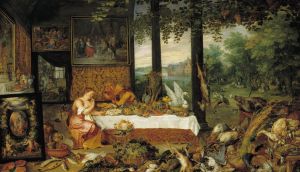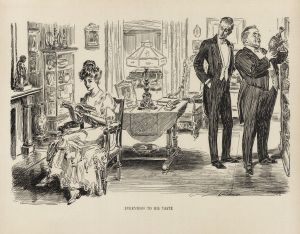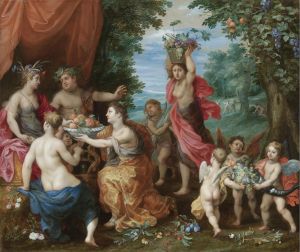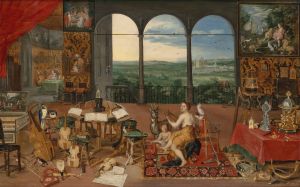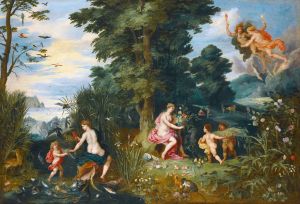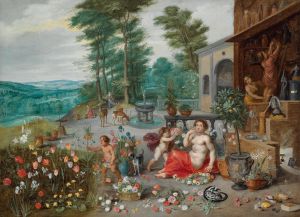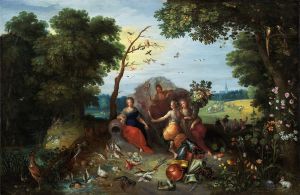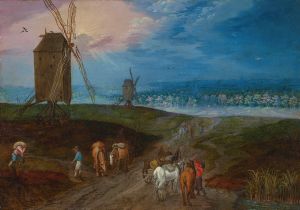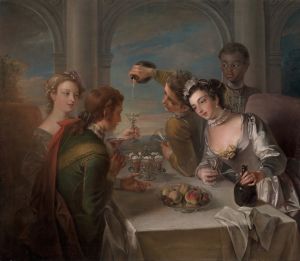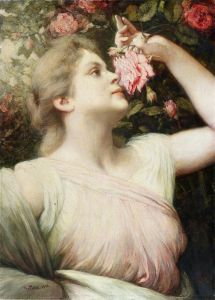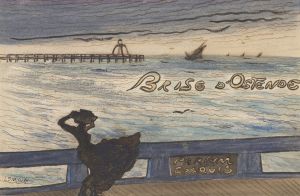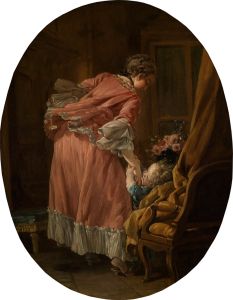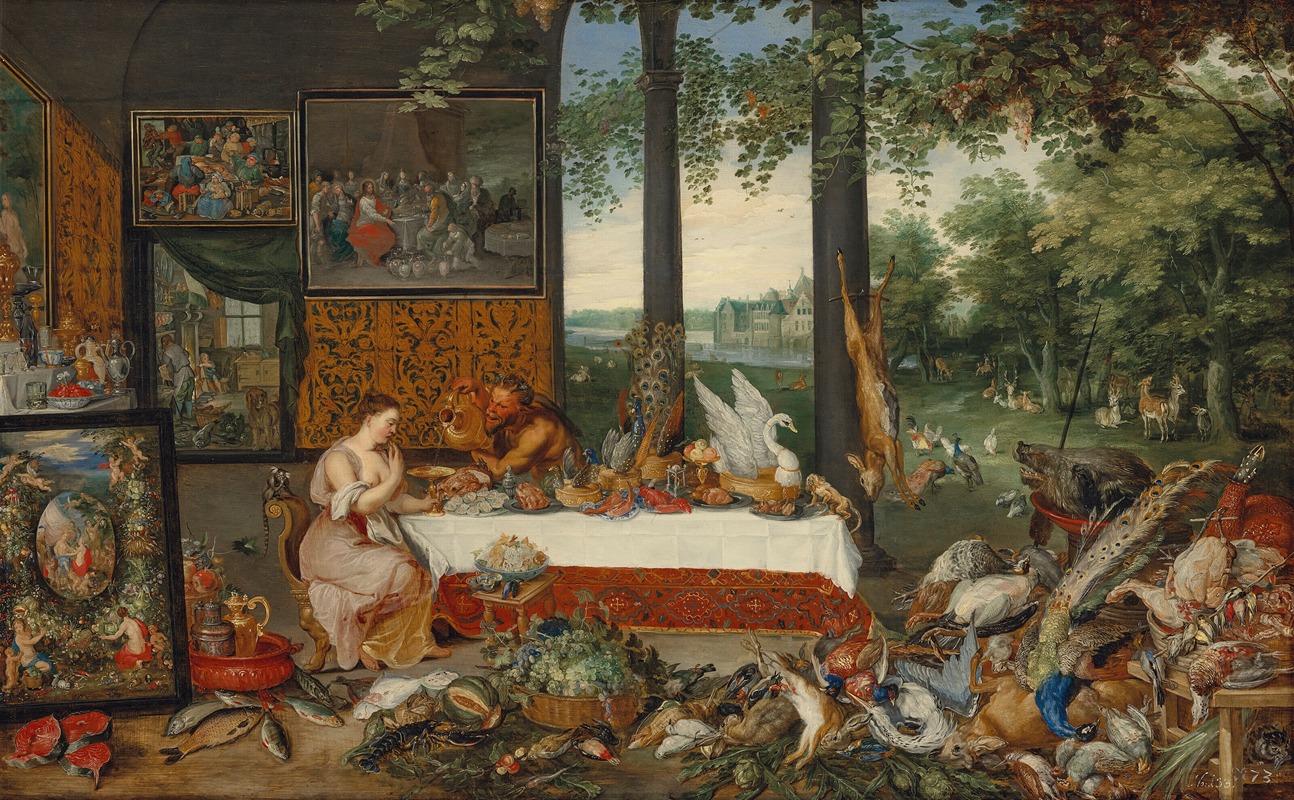
The Five Senses; Taste
A hand-painted replica of Jan Brueghel the Younger’s masterpiece The Five Senses; Taste, meticulously crafted by professional artists to capture the true essence of the original. Each piece is created with museum-quality canvas and rare mineral pigments, carefully painted by experienced artists with delicate brushstrokes and rich, layered colors to perfectly recreate the texture of the original artwork. Unlike machine-printed reproductions, this hand-painted version brings the painting to life, infused with the artist’s emotions and skill in every stroke. Whether for personal collection or home decoration, it instantly elevates the artistic atmosphere of any space.
Jan Brueghel the Younger, a prominent Flemish Baroque painter, is known for his detailed and vibrant works that often explore allegorical themes. One of his notable series is "The Five Senses," which he created in collaboration with other artists, including Peter Paul Rubens. This series includes five paintings, each representing one of the human senses: sight, hearing, smell, touch, and taste. "The Five Senses; Taste" is one of these paintings and exemplifies Brueghel's skill in combining allegory with intricate detail.
"The Five Senses; Taste" is a rich and elaborate composition that reflects the opulence and abundance associated with the sense of taste. The painting is filled with a variety of foods and beverages, showcasing an array of textures and colors that highlight Brueghel's attention to detail. The scene is typically set in a lavish interior, often featuring a banquet or feast, with tables laden with an assortment of dishes, fruits, and wines. This abundance not only represents the sense of taste but also serves as a symbol of wealth and prosperity.
In the tradition of Flemish painting, Brueghel's work is characterized by its meticulous attention to detail and the use of vibrant colors. The objects in the painting are rendered with precision, capturing the textures and reflections of different materials, from the sheen of glassware to the softness of ripe fruit. This attention to detail invites viewers to appreciate the sensory experience of taste visually.
Brueghel often collaborated with other artists to enhance the allegorical and narrative elements of his paintings. In "The Five Senses" series, he worked with Rubens, who contributed figures to the compositions. These figures often embody mythological or allegorical themes, adding layers of meaning to the depiction of the senses. In "Taste," the figures might be engaged in the act of eating or drinking, further emphasizing the theme.
The painting not only serves as a celebration of the sense of taste but also reflects the cultural and social context of the time. The depiction of luxurious banquets and exotic foods can be seen as a reflection of the wealth and global trade networks of the 17th century, particularly in the Flemish region. The inclusion of imported goods such as spices and fruits highlights the interconnectedness of different cultures and the influence of trade on European society.
"The Five Senses; Taste" is part of a broader tradition of allegorical painting that was popular in the Baroque period. Artists used allegory to explore complex themes and ideas, often incorporating symbolism and iconography to convey deeper meanings. In Brueghel's work, the sense of taste is not only a physical experience but also a metaphor for indulgence, pleasure, and the richness of life.
Overall, Jan Brueghel the Younger's "The Five Senses; Taste" is a masterful example of Baroque painting that combines detailed realism with allegorical depth. Through its intricate depiction of food and drink, the painting invites viewers to engage with the sensory experience of taste while reflecting on the cultural and social themes of the era.





